The color temperature is measured in Kelvin (K) and describes the light color of white light.
The right color temperature is essential for optimally illuminating rooms, creating the desired atmosphere and supporting vision that is easy on the eyes. Whether for living rooms, work or relaxation areas – the color temperature determines how the light in the room works and also influences our concentration and well-being.
This article goes into detail about the different light colors and helps you to choose the ideal color temperature for your living space and needs.
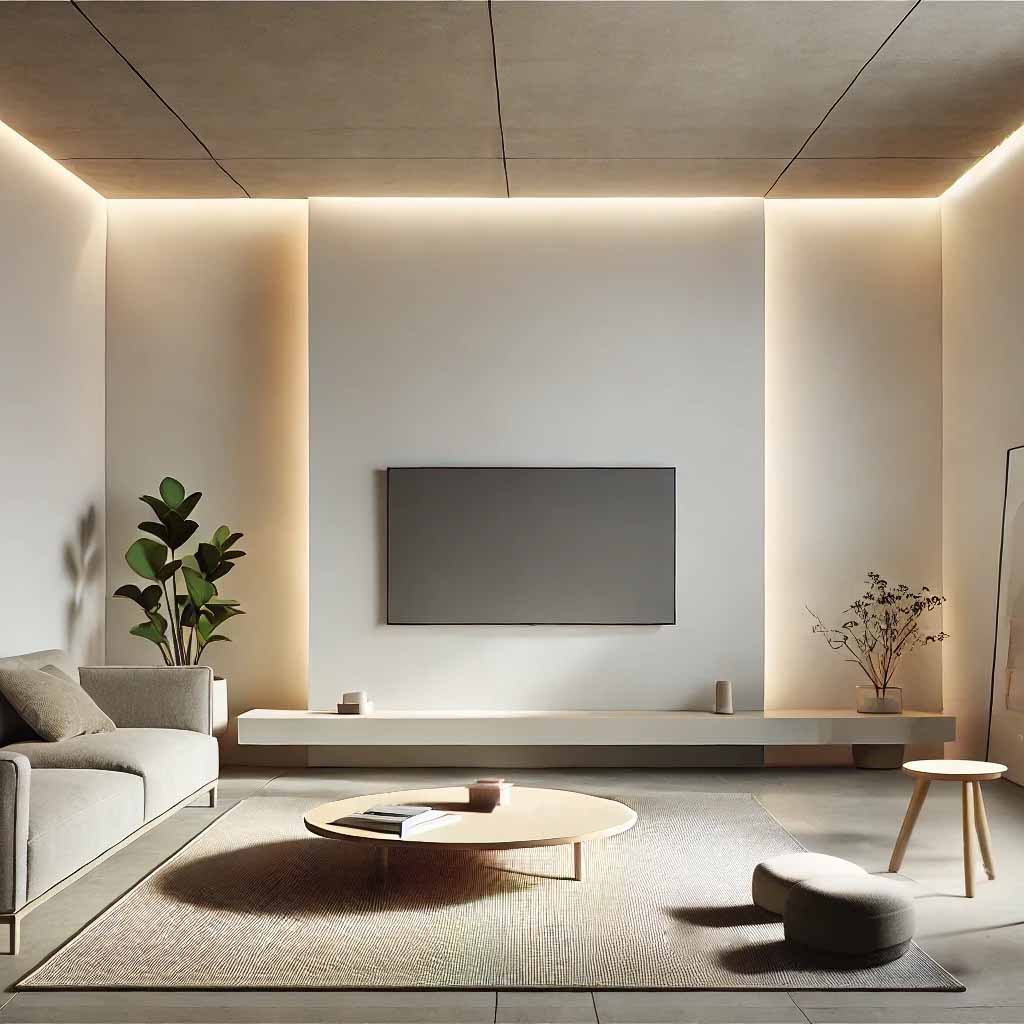
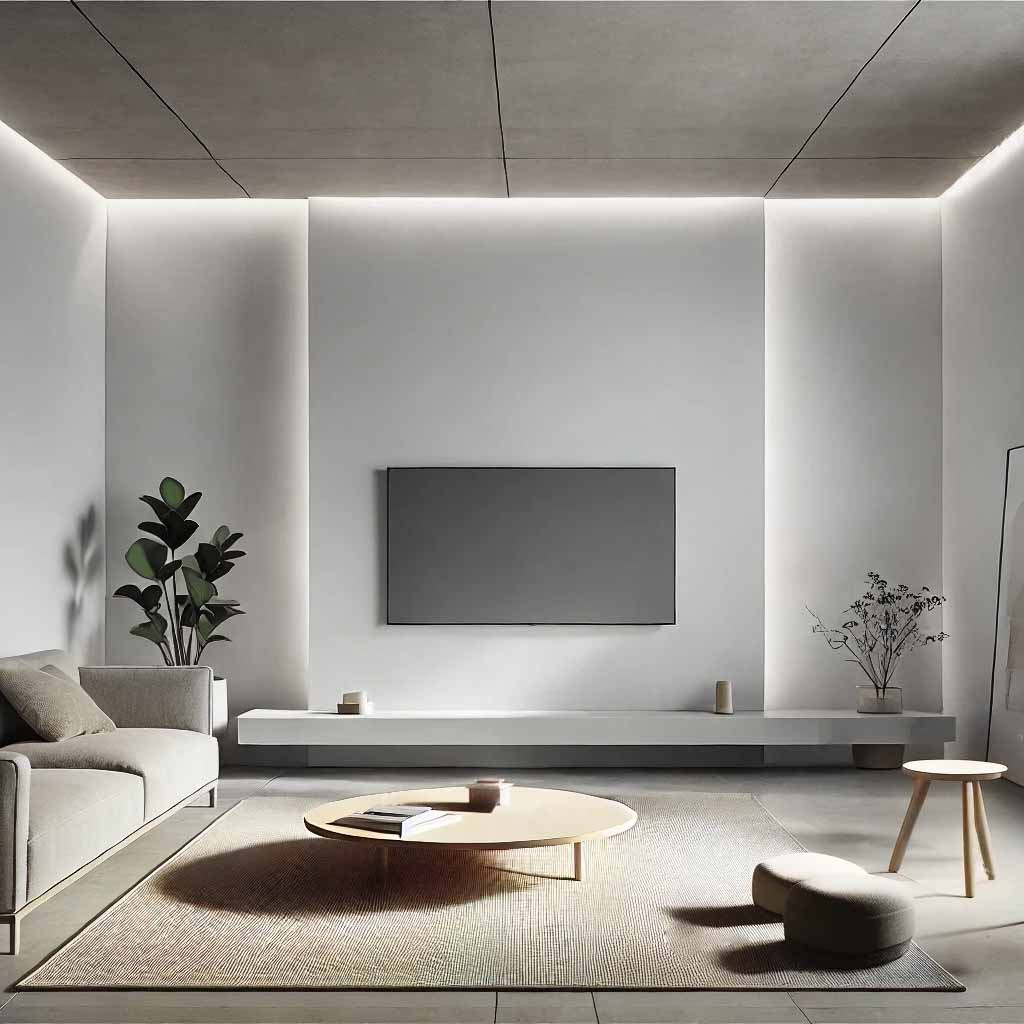
What is color temperature?

The color temperature indicates the color impression of white light in the unit Kelvin (K) (learn more about the units of light).
The color temperature range relevant for lighting extends from warm white (below 3300 Kelvin) to neutral white and daylight white/cold white(above 5500 Kelvin). These designations were created because orange and yellow tones are perceived as “warm”, whereas blue tones are perceived as “cold”. These terms are chosen subjectively and describe the light color in Kelvin and say nothing about the temperature (warm or cold) of the LED light. A higher color temperature (higher Kelvin value) therefore results in a colder light color!
When a thermal radiator – often referred to as a black body/planeradiator – is heated, it emits electromagnetic radiation. Depending on its temperature, the composition of the radiation is different and a different color impression is created. For this reason, the temperature unit Kelvin is also used for the color temperature and describes the light color of white light! Brightness, on the other hand, is specified as luminous flux, luminous intensity, illuminance, see here for the informative article on units of light.
- The light color/color temperature describes the hue of white light
- The unit of color temperature is Kelvin
- The white light becomes cooler as the number of Kelvin increases
What is the color temperature of daylight?
The color temperature of natural daylight depends on the time of day and is over 5,500 Kelvin at midday. Sunlight filtered through the earth’s atmosphere produces a bluish light color. Light sources with a similar spectrum also have a stimulating effect.
The most common light colors at a glance
The most common color temperatures can easily be described using the terms warm white, neutral white and daylight white, which helps many people to better imagine the light. These terms provide a rough guide: warm white is reminiscent of cozy candlelight, neutral white appears clear and objective, while daylight white resembles the natural light of the sun.
Nevertheless, it is important to pay attention to the exact number of Kelvin, as the terms vary from manufacturer to manufacturer. In the following, we therefore provide a more detailed insight and support with recommendations for areas of application.
| Extra warm white | below 2500K |
| Warm white | 2500K – 3300K |
| Neutral white | 3300K – 5000K |
| Daylight white | over 5000K |
| tunable white | 2200K to 5700K |
2200K: Extra warm white
2200K refers to extra-warm white light, which is even warmer and more comfortable than the classic 2700K. It is strongly reminiscent of the warm, golden-yellow light of candles or classic incandescent lamps with a low wattage. In addition, it is always used in a dimmed state, which in turn enhances the effect. This light color is often used to create a particularly cozy, inviting atmosphere. It also has a positive effect on our hormones in preparation for a good night’s sleep. 2200K is usually used for tuneable white luminaires.
| Areas of application for 2200K: Extra warm white | |
| Living room | Creates a pleasant ambience and enhances the feeling of coziness. |
| Bedrooms | The extra-warm light creates a relaxed, calming environment. |
| Children’s room | Ideally suited for a night light function as there is no blue component |
2700K: Warm white
The 2700K light color corresponds to the color temperature of traditional incandescent lamps. This warm white light creates a cozy, relaxing atmosphere and is preferably used in living rooms and bedrooms. The warm, golden hues create a cozy environment that is ideal for calming down or spending a relaxing evening. The best-selling LED spotlights have a light color of 2700K.
| Areas of application for 2700K: Warm white | |
| Living room | Create a cozy atmosphere that invites you to relax and feel good. |
| Bedroom | The warm light promotes a calming environment that is ideal for falling asleep. |
| Dining room | Perfect for sociable evenings where a pleasant ambience is desired. |
3000K: Warm white
At 3000K, this color temperature is also in the warm white range, but somewhat more neutral/cooler than 2700K. The light appears less yellowish and is an excellent compromise between warm and neutral light. It is particularly suitable for areas where both a cozy atmosphere and good illumination are required.
| Areas of application for 3000K: Warm white | |
| Living room | Provides bright yet warm illumination. |
| Bathroom | Provides a pleasant, warm brightness that creates a fresh, inviting atmosphere. |
| Entrance area | Creates an inviting and well-lit ambience. |
4000K: Neutral white
Neutral white light with 4000K is an all-rounder that is suitable for both living spaces and work areas. This color temperature emits a clear light that promotes concentration without appearing too sterile. 4000K is often used in offices and kitchens where bright and neutral lighting is required.
| Areas of application for 4000K: Neutral white | |
| Study | Promotes concentration and ensures a productive working environment. |
| Kitchen | Clear and unadulterated color reproduction, ideal for preparing food. |
| Bathroom | Creates a fresh, clean atmosphere, perfect for the morning routine. |
6000K: Daylight white
At 6000K, we reach the daylight white range, which corresponds to the natural color temperature of the midday sun. This cool, slightly bluish lighting is ideal for work areas where high concentration and a detailed view are required. 6000K is often used in workshops, garages or industrial environments. As part of a Human Centric Lighting (HCL) scheme, this light color is used to support the natural day-night rhythm, which can promote both well-being and concentration.
| Areas of application for 6000K: Daylight white | |
| Home office | 6000K is ideal for concentrated work at the desk, as it increases alertness and supports productivity in a similar way to daylight. |
| Dining table | When the HCL system simulates the morning, daylight white light at the dining table can help to wake you up and promote concentration for the day. |
| Bathroom | For a clear view when applying make-up or shaving, light with 6000K on the mirror in the bathroom can be useful as it highlights details better |
2200K - 5700K: tunable white (CCT)
Tunable White refers to a technology in which the color temperature can be flexibly adjusted, usually in the range from 2200K to 5700K. This makes it possible to vary the light from warm white to daylight white depending on requirements or the time of day. With Tunable White spots, you can optimally adapt the lighting to your activities and moods.
| Application areas for 2200K – 5700K: tunable white | |
| Living room | During the day, a cool color temperature (e.g. 4000K) can provide a clear view, while in the evening a warmer light (e.g. 2700K) can be switched to create a cozy atmosphere. |
| Bathroom | Use a cooler light temperature (4000K to 5700K) in the morning for a refreshing atmosphere and switch to a warm white light in the evening to relax. |
| Home office | Tunable White makes it possible to adapt the light to the time of day: In the morning, daylight white light (5700K) promotes concentration, while in the evening a warmer setting (2700K) brings the day to a peaceful close. |
Which color temperature for which room
| Room | Color temperature | Explanation |
| Living room | 2700K – 3000K | Warm white light creates a cozy, relaxing atmosphere, ideal for relaxation and socializing. |
| Dining room | 2700K – 5700K | Activating daylight white at breakfast and a cozy atmosphere with warm white light in the evening. |
| Bedroom | 2700K – 3000K | Warm white light promotes relaxation and prepares the body for sleep. |
| Kitchen | 3000K – 4000K | Neutral white light provides good illumination when cooking and a pleasant atmosphere when eating. |
| Bathroom | 2700K – 4000K | In the morning, neutral white light promotes alertness, while warm white light offers relaxation in the evening. |
| Home office | 4000K – 5700K | Neutral white to daylight white promotes concentration and productivity at work. |
| Hallway/ entrance area | 2700K – 4000K | Neutral white light offers a bright and friendly welcome without appearing too cool. |
| Home workshop | 4000K – 5700K | Bright, clear light supports precise work and ensures good visibility. |
| Children’s room | 2700K – 4000K | Warm white light for quiet evenings, neutral white for homework, play and activities. |
| Garden/ Terrace | 2700K – 4000K | Warm white light creates a pleasant, cozy atmosphere outdoors. |
Warm white or cool white?
Warm white has a color temperature below 3,300 Kelvin, appears cozy and is suitable for living areas.
The light of cool white is above 5,000 Kelvin, appears cooler and is suitable for work areas.
The surface temperature of the sun is 5772 Kelvin. The sun’s rays hit the earth at midday with this light color. This color temperature range is therefore referred to as daylight white, although it is already in the cold white range
The effect of color temperatures on well-being
The right color temperature not only has an impact on the aesthetics of a room, but also on the well-being of the people who spend time in it. Warm white light colors (warm white 2700K or 3000K) have a calming effect and promote relaxation, while neutral white (4000K) and daylight white light (6000K) have a more stimulating effect and promote concentration. It is therefore advisable to choose the right light color depending on the time of day and activity.
Example:
– In the morning and during the day: Use neutral white or daylight white light to stay awake and productive.
– In the evening: switch to warm white light to prepare the body for rest and promote sleep.
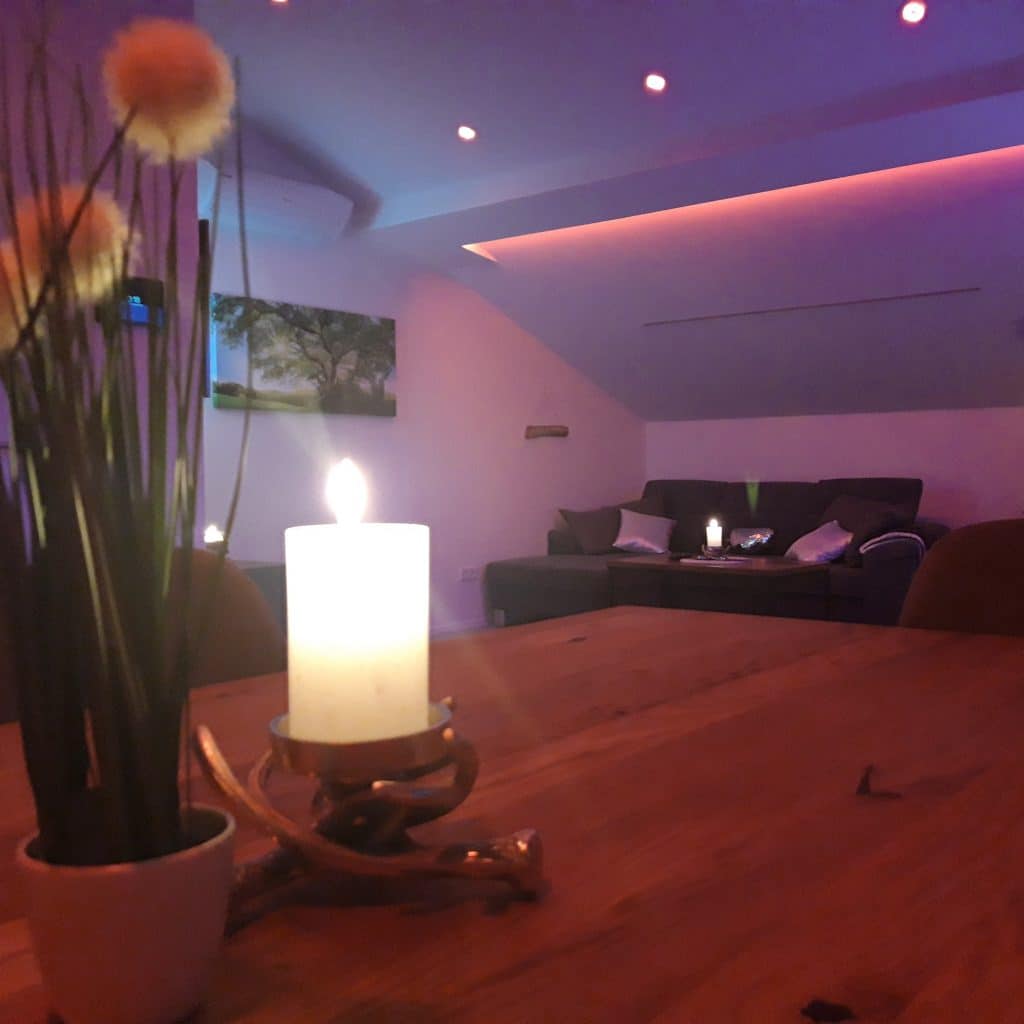
Warm white 2700K or 3000K
Should you now use 2700 or 3000 Kelvin for warm white? Many people are faced with this question when buying their lights/lamps and are unsure. No need to worry, the difference is not that big and there is no right or wrong here. The light color is slightly warmer at 2700K (more yellow/gold components) than at 3000K. In addition, the eye adapts to the color temperature. In this case, we tend to prefer 2700 Kelvin, as this light color is a touch more comfortable and cozy and therefore promotes relaxation. However, the decision is a personal one, so we leave the choice up to our customers and offer a wide range.
Incidentally, both variants are also possible in one. The tuneable white / CCT LED variants described above can be selected and each light color can be set between warm white and daylight white. Alternatively, we also offer dim to warm spots. In the undimmed state, the spotlight has a color temperature of 3000K and the higher the dimming level, the warmer the light color becomes!
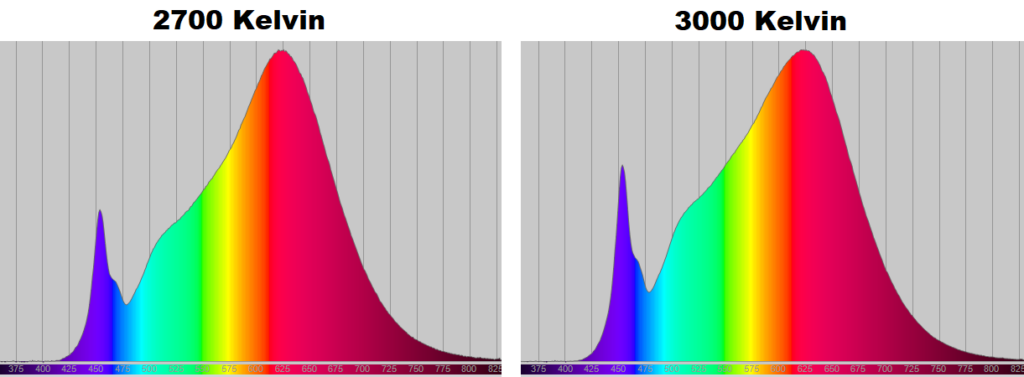
- The color temperature accentuates the living spaces and creates moods
- The right light color supports our eyes and ensures safety
- The color temperature influences our day/night rhythm
Summary
Choosing the right color temperature is crucial for the design of living and working spaces. Each light color has its specific advantages and can help to increase well-being and improve the functionality of a room. Whether warm white for relaxation or neutral white for concentration – the right light color makes all the difference.
The right products for every color temperature
You will find the right products for every color temperature in our online store. In our extensive range you will find a wide variety of LED spotlights, LED strips, LED lights for indoor and outdoor use and much more. .
Many more guides, tutorials and more
Finally, we would like to recommend our service area. There you will find numerous other informative articles (e.g. converting lumens to watts, light units, …), extensive tutorials & help with questions (e.g. 10 tips for selecting LED spotlights, the light emitting diode, …), free tools(online light planner) and much more:
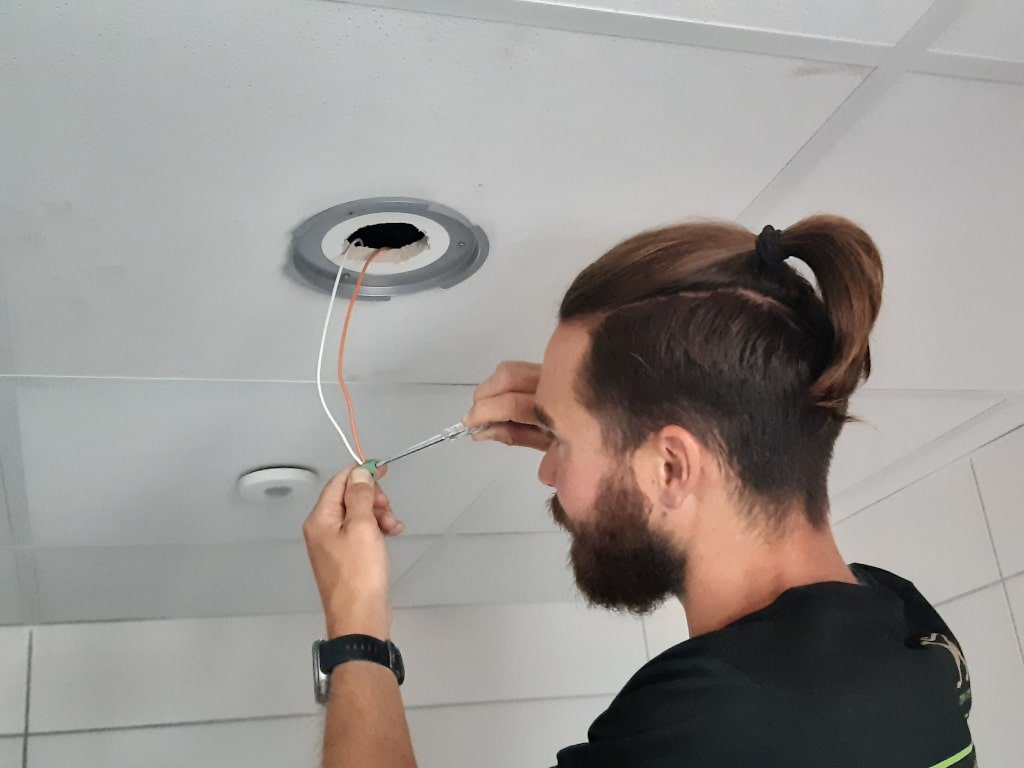
popular posts on our blog:
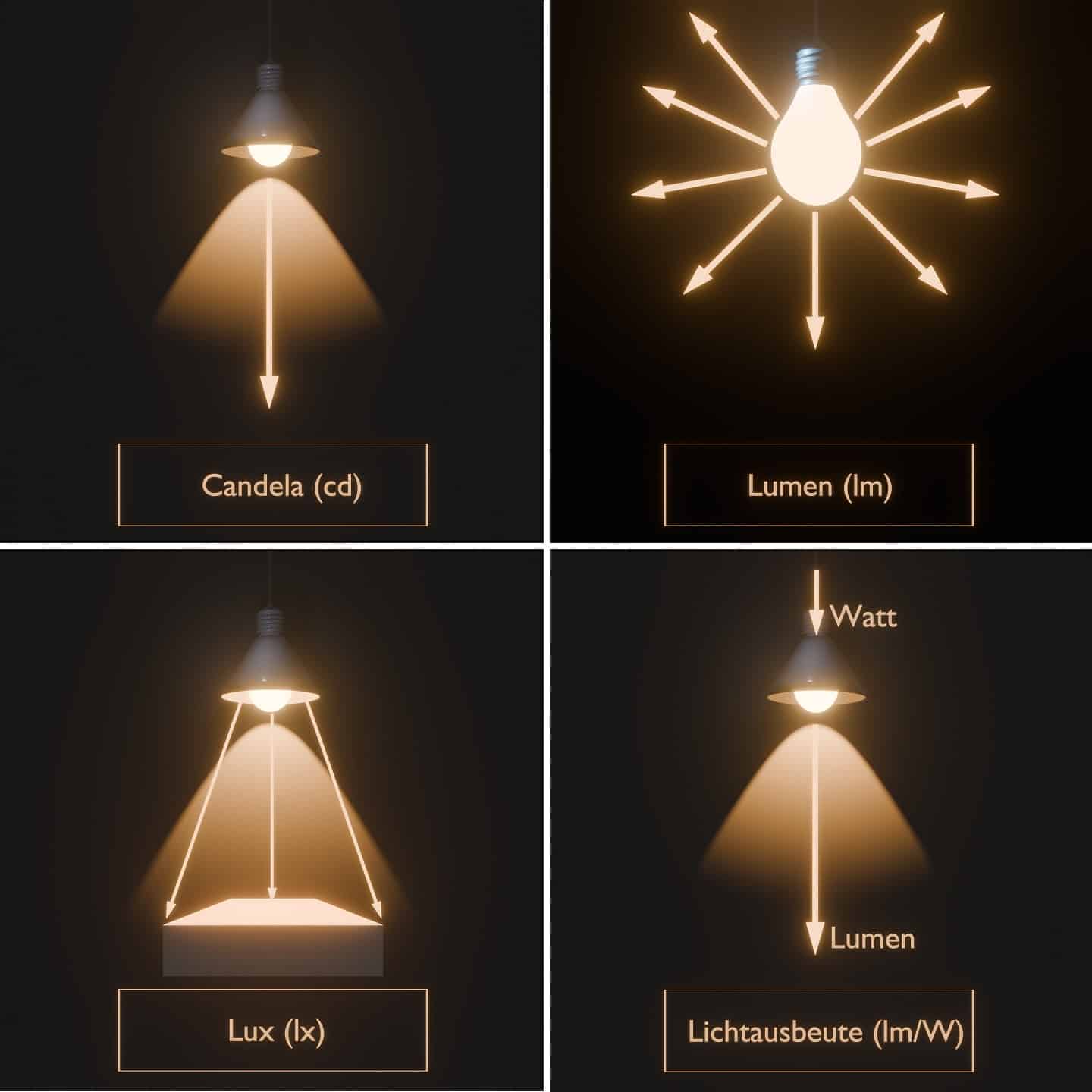
The most important photometric quantities and units relating to light are graphically presented and simply explained.

Useful tools – determine number of spots, voltage drop calculator, calculate power, and much more. – all in one tool.
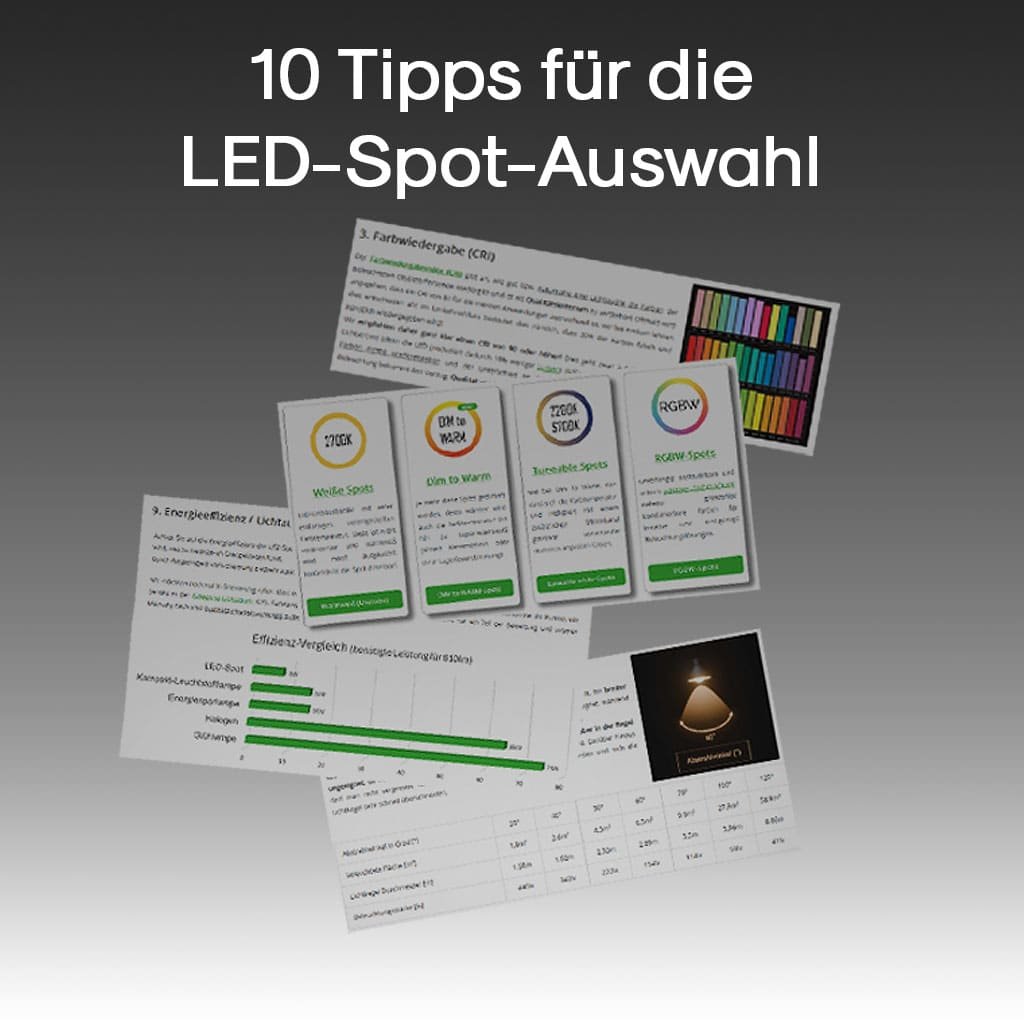
What to look out for when choosing recessed LED lights and what can be dispensed with. Interesting news and comparisons.
